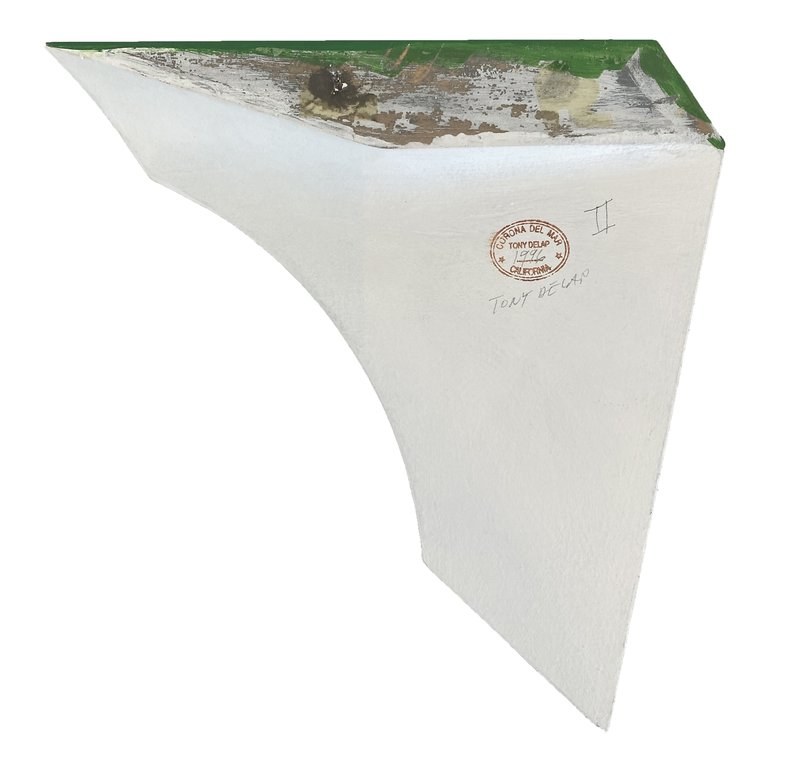About Tony Delap
Ranging across the borders of sculpture, design, and painting, the West Coast artist Tony DeLap was among the 1960s figures who helped pioneer the Minimalist movement along with Dan Flavin, Donald Judd, Carl Andre, and Sol LeWitt. In such works as The Whim of Tituba and Plenty of Green, solid-colored, square canvases are altered slightly through slight protrusions or …
Ranging across the borders of sculpture, design, and painting, the West Coast artist Tony DeLap was among the 1960s figures who helped pioneer the Minimalist movement along with Dan Flavin, Donald Judd, Carl Andre, and Sol LeWitt. In such works as The Whim of Tituba and Plenty of Green, solid-colored, square canvases are altered slightly through slight protrusions or cut-off corners. His large- and small-scale sculptures are often polygons, appearing from particular angles to be freestanding although each structure is in fact buttressed at one or two points. In all of his work, the artist forces the viewer to look closely and then look again, causing them to reassess their perceptions.
A longtime teacher at the University of California, Irvine—where he was a mentor to the California artists Bruce Nauman, James Turrell, and John McCracken—DeLap has had solo exhibitions at the such institutions as Oakland Art Museum, the Santa Barbara Museum of Art, the Newport Harbor Art Museum, the Orange County Museum of Art, and the San Jose Museum of Art. His work has also been featured in group shows at the Museum of Modern Art, the Los Angeles County Museum of Art, and the Oakland Art Museum, among other venues.
Untitled II
, 1996Painting
9.50 x 9.50 x 1.50 in
24.1 x 24.1 x 3.8 cm
Signed by Artist on Verso
About Tony Delap
Ranging across the borders of sculpture, design, and painting, the West Coast artist Tony DeLap was among the 1960s figures who helped pioneer the Minimalist movement along with Dan Flavin, Donald Judd, Carl Andre, and Sol LeWitt. In such works as The Whim of Tituba and Plenty of Green, solid-colored, square canvases are altered slightly through slight protrusions or …
Ranging across the borders of sculpture, design, and painting, the West Coast artist Tony DeLap was among the 1960s figures who helped pioneer the Minimalist movement along with Dan Flavin, Donald Judd, Carl Andre, and Sol LeWitt. In such works as The Whim of Tituba and Plenty of Green, solid-colored, square canvases are altered slightly through slight protrusions or cut-off corners. His large- and small-scale sculptures are often polygons, appearing from particular angles to be freestanding although each structure is in fact buttressed at one or two points. In all of his work, the artist forces the viewer to look closely and then look again, causing them to reassess their perceptions.
A longtime teacher at the University of California, Irvine—where he was a mentor to the California artists Bruce Nauman, James Turrell, and John McCracken—DeLap has had solo exhibitions at the such institutions as Oakland Art Museum, the Santa Barbara Museum of Art, the Newport Harbor Art Museum, the Orange County Museum of Art, and the San Jose Museum of Art. His work has also been featured in group shows at the Museum of Modern Art, the Los Angeles County Museum of Art, and the Oakland Art Museum, among other venues.
Contact an Artspace Advisor
advisor@artspace.com














